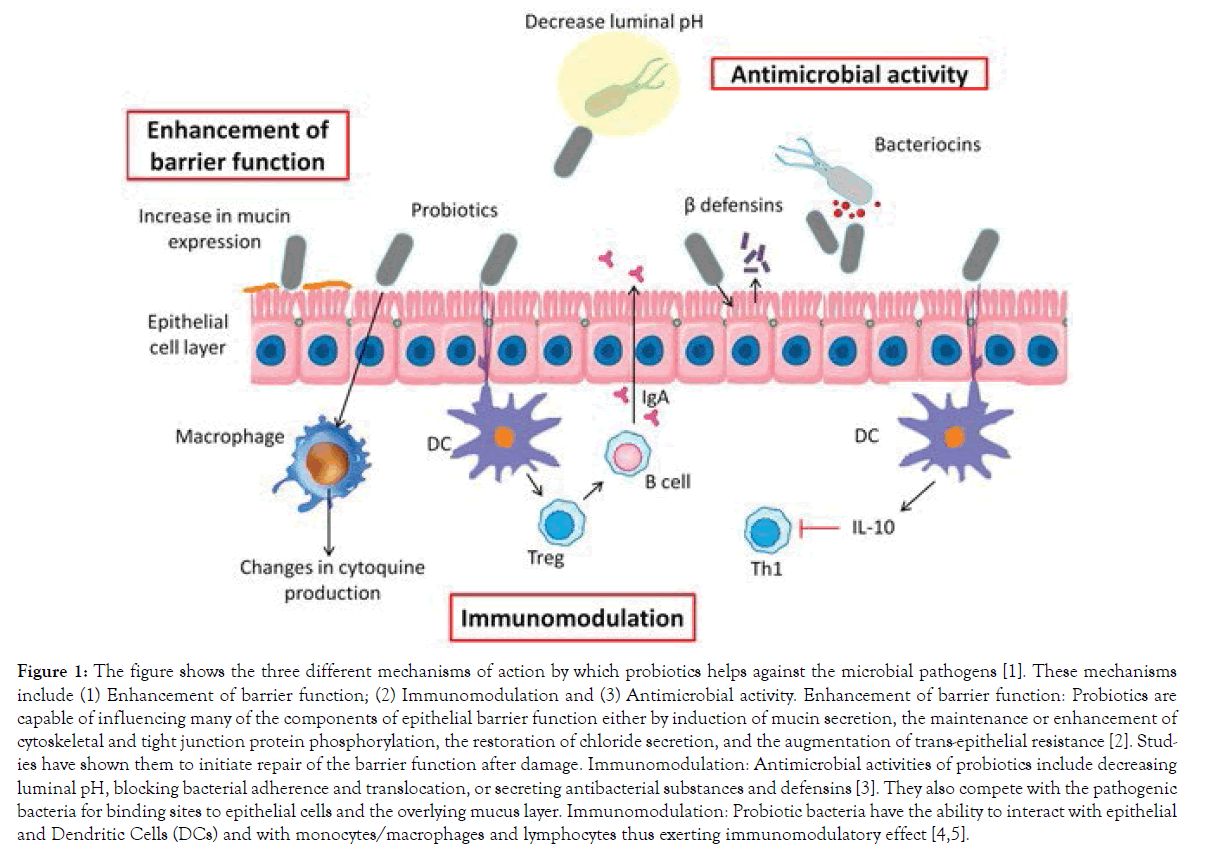Indexed In
- Genamics JournalSeek
- Academic Keys
- JournalTOCs
- China National Knowledge Infrastructure (CNKI)
- Access to Global Online Research in Agriculture (AGORA)
- Centre for Agriculture and Biosciences International (CABI)
- RefSeek
- Directory of Research Journal Indexing (DRJI)
- Hamdard University
- EBSCO A-Z
- OCLC- WorldCat
- Scholarsteer
- SWB online catalog
- Publons
- Euro Pub
- Google Scholar
Useful Links
Share This Page
Journal Flyer

Open Access Journals
- Agri and Aquaculture
- Biochemistry
- Bioinformatics & Systems Biology
- Business & Management
- Chemistry
- Clinical Sciences
- Engineering
- Food & Nutrition
- General Science
- Genetics & Molecular Biology
- Immunology & Microbiology
- Medical Sciences
- Neuroscience & Psychology
- Nursing & Health Care
- Pharmaceutical Sciences
Image Article - (2020) Volume 11, Issue 9
Various Mechanisms of Action of Probiotics: An Image Article
Gloria Thomson*Received: 19-Sep-2020 Published: 02-Oct-2020, DOI: 10.35248/2157-7110.20.11.846

Figure 1. The figure shows the three different mechanisms of action by which probiotics helps against the microbial pathogens [1]. These mechanisms include (1) Enhancement of barrier function; (2) Immunomodulation and (3) Antimicrobial activity. Enhancement of barrier function: Probiotics are capable of influencing many of the components of epithelial barrier function either by induction of mucin secretion, the maintenance or enhancement of cytoskeletal and tight junction protein phosphorylation, the restoration of chloride secretion, and the augmentation of trans-epithelial resistance [2]. Studies have shown them to initiate repair of the barrier function after damage. Immunomodulation: Antimicrobial activities of probiotics include decreasing luminal pH, blocking bacterial adherence and translocation, or secreting antibacterial substances and defensins [3]. They also compete with the pathogenic bacteria for binding sites to epithelial cells and the overlying mucus layer. Immunomodulation: Probiotic bacteria have the ability to interact with epithelial and Dendritic Cells (DCs) and with monocytes/macrophages and lymphocytes thus exerting immunomodulatory effect [4,5].
REFERENCES
- Cerdó T, Santos JAG, Bermúdez MG, Campoy C. The role of probiotics and prebiotics in the prevention and treatment of obesity. Nutrients. 2019;11:635.
- O'Hara AM, Shanahan F. Mechanisms of action of probiotics in intestinal diseases. Scientific World Journal. 2007;7:31-46.
- Ng SC, Hart AL, Kamm MA, Stagg AJ, Knight SC. Mechanisms of action of probiotics: recent advances. Inflamm Bowel Dis. 2009;15:300-310.
- Gogineni VK, Morrow LE, Malesker MA. Probiotics: mechanisms of action and clinical applications. J Prob Health. 2013;1:2.
- Brito MB, Díaz JP, Quezada SM, Llorente CG, Gil A. Probiotic mechanisms of action. Ann Nutr Metab. 2012;61:160-174.
Citation: Thomson G (2020) Various Mechanisms of Action of Probiotics: An Image Article. J Food Process Technol 11:846. doi: 10.35248/2157-7110.20.11.846
Copyright: © 2020 Thomson G. This is an open-access article distributed under the terms of the Creative Commons Attribution License, which permits unrestricted use, distribution, and reproduction in any medium, provided the original author and source are credited.


